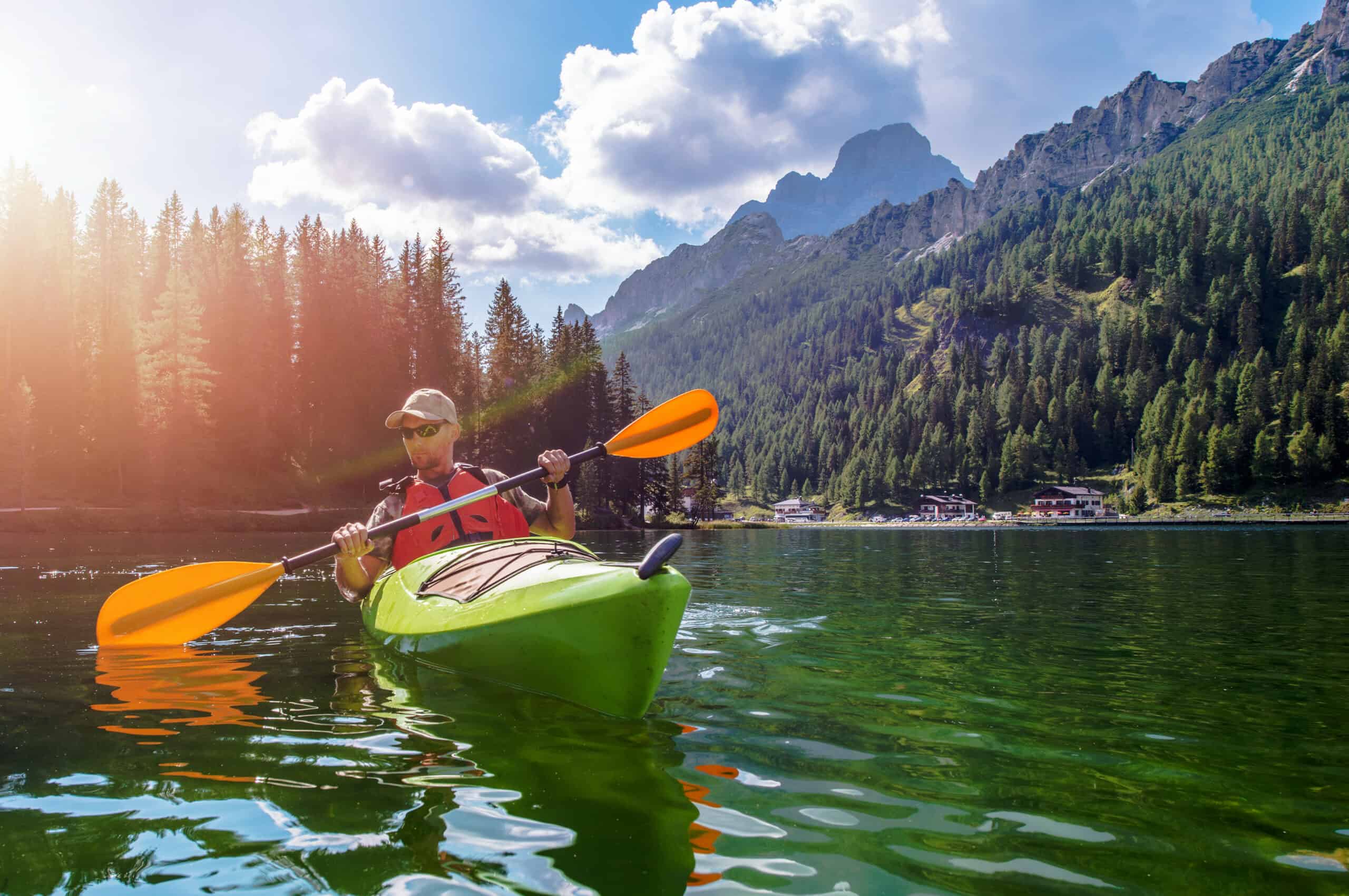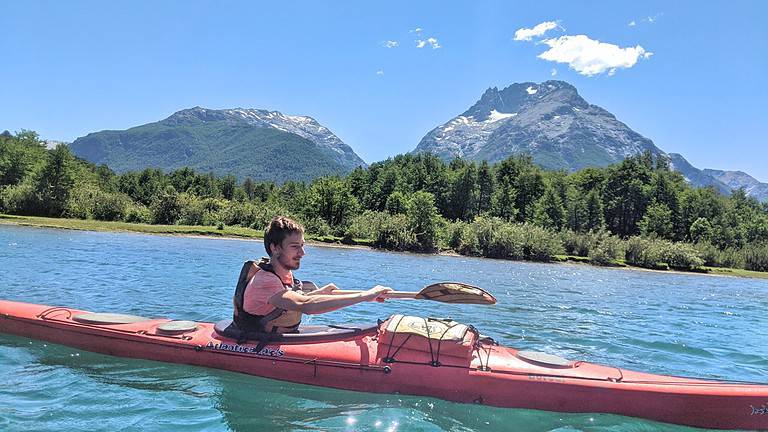Sit-On-Top Kayak Safety: Essential Tips and Techniques
Are you planning to go kayaking with a sit-on-top kayak? It’s important you understand Sit-On-Top Kayak Safety. While kayaking is an exciting and enjoyable sport, it’s crucial to prioritize safety on the water. This article’ll provide essential tips and techniques on sit-on-top kayak safety. Whether you’re a beginner or an experienced kayaker, you must learn about the safety measures and equipment you need to have a safe and enjoyable kayaking experience. Read on to learn more about sit-on-top kayak safety and how to stay safe on the water.
Understanding Sit-On-Top Kayaks
Before we dive into safety tips, it’s important to understand what a sit-on-top kayak is and its advantages and disadvantages. A sit-on-top kayak is a type of kayak that has an open cockpit, allowing the paddler to sit on top of the kayak rather than inside it. This design makes getting in and out of the kayak easier and provides a comfortable and spacious seating area.
Advantages of Sit-On-Top Kayaks
- Stability: Sit-on-top kayaks are generally wider and flatter than traditional kayaks, providing more stability on the water. This makes them an excellent choice for beginners or those nervous about tipping over.
- Comfortable: The open cockpit design of a sit-on-top kayak allows for more legroom and a more comfortable seating area than traditional kayaks.
- Self-bailing: Sit-on-top kayaks have scupper holes allowing water to drain from the kayak. This means that if you take on water, it will drain out on its own, making it easier to stay afloat.
- Easy to use: Sit-on-top kayaks are user-friendly and don’t require any special knowledge or skills. You sit on top of the kayak and paddle.
Disadvantages of Sit-On-Top Kayaks
- Susceptible to wind and waves: The open cockpit design of a sit-on-top kayak can make it more difficult to control in windy or wavy conditions. This can be a disadvantage for more experienced kayakers who are looking for a more challenging experience.
- Slower: Sit-on-top kayaks are generally slower than traditional kayaks due to their wider design. This can be a disadvantage for those looking for a faster-paced kayaking experience.
Overall, sit-on-top kayaks are an excellent choice for beginners or those seeking a stable and comfortable kayaking experience. However, it’s important to consider the disadvantages and choose a right kayak for your skill level and goals. The next section’ll discuss essential safety equipment for sit-on-top kayaking.

Essential Safety Equipment for Sit-on-Top Kayaking
When it comes to sit-on-top kayak safety, having the proper safety equipment is crucial. The most essential equipment is a Personal Flotation Device (PFD) or life jacket. A PFD can help keep you afloat in the water, even if you’re injured or unconscious. Always wear a properly fitted PFD appropriate for your weight and the conditions you’ll be kayaking in.
Aside from PFDs, there are other important safety gear and equipment for sit-on-top kayaking. A whistle or other audible signaling device is required by law and can be used to call for help in an emergency. A waterproof flashlight, a first-aid kit, and a throw rope are also important items to have on hand. Properly securing your gear is also important to prevent it from falling overboard.
When choosing safety equipment, look for items that are durable, waterproof, and easy to access in an emergency. Consider investing in gear specifically designed for kayaking, such as a waterproof phone case or a kayak-specific first aid kit.
Remember, having the right safety equipment is only part of the equation. Knowing how to use the equipment properly and practicing good kayaking techniques is also important. In the next section, we’ll discuss some basic kayaking techniques for beginners.
Understanding Water Conditions and Hazards
When it comes to kayaking, understanding the water conditions and potential hazards is essential to ensure a safe and enjoyable experience. Before setting out on a sit-on-top kayak trip, it’s important to check the weather forecast and wind speed and understand how these factors can impact the kayaker’s safety. High winds and heavy rain can make kayaking more difficult and increase the risk of capsizing.
In addition to weather conditions, it’s important to know the common hazards in different water environments. Rocks, currents, waves, and other obstacles can pose a risk to kayakers if not navigated correctly. It’s important to know how to navigate these hazards safely, and to avoid them if possible.
Here are some tips for staying safe on the water:
- Be aware of your surroundings: Always be aware when kayaking. Keep an eye out for potential hazards like rocks, logs, and other obstacles.
- Understand currents and tides: Understanding how currents and tides can impact your kayaking experience is important. Check the tide tables before you head out, and be aware of any changes in the current.
- Avoid dangerous areas with strong currents, rapids, or other hazards. If you’re unsure if an area is safe, ask a local expert or avoid it altogether.
- Stay visible: Use reflective tape or other markers to make yourself more visible on the water, especially if you’re kayaking at night or in low-light conditions.
Understanding the water conditions and potential hazards can help ensure a safe and enjoyable kayaking experience. The following section discuss some essential safety tips for sit-on-top kayaking.
Kayaking Techniques for Beginners
Learning some basic kayaking techniques is essential before heading out onto the water. Proper paddling and steering techniques will help you control your kayak and maneuver through the water more efficiently. Here are some steps to follow:
Step 1: Positioning Yourself in the Kayak
Start by sitting in the kayak with your feet on the footrests and your knees slightly bent. Your back should be straight, and your core muscles should be engaged to help you maintain balance and stability.
Step 2: Holding the Paddle
Hold the paddle with both hands, keeping your arms straight and your hands shoulder-width apart. Your grip on the paddle should be firm but not too tight.
Step 3: Paddling
To paddle, dip the paddle blade into the water and pull it towards your hip, then lift it out of the water and repeat on the other side. Keep your paddle close to the kayak to avoid straining your arms and shoulders. It’s important to maintain a steady pace while paddling to conserve your energy and avoid fatigue.
Step 4: Steering
To steer, use a sweeping motion with the paddle to turn the kayak in the direction you want to go. Use a stronger and longer stroke on the side you want to turn towards. For example, if you want to turn right, use a firm stroke on the right side.
Step 5: Maintaining Balance
Maintaining balance while on the water is important for kayaking safety. Keep your weight centered in the kayak, and use your core muscles to maintain stability. If you feel like losing your balance, lean in the opposite direction to correct yourself.
Practice these techniques in calm water before attempting to kayak in more challenging conditions. Remember, the key to successful kayaking is to stay relaxed, focused, and aware of your surroundings.
Sit-on-Top Kayak Maintenance and Repair
Proper maintenance and repair of your sit-on-top kayak is essential for a safe and enjoyable kayaking experience. Here are some tips to help you keep your kayak in good condition:
Cleaning and Storage
After each use, rinse your kayak with fresh water to remove any salt, sand, or debris that may have accumulated. Use a mild soap and soft brush to clean the kayak, being careful not to scratch the surface. Avoid using harsh chemicals or abrasive materials that could damage the kayak.
Once the kayak is clean, store it in a cool, dry place away from direct sunlight and extreme temperatures. Avoid storing the kayak on its side or upside down, as this can cause warping or deformation of the hull.
Identifying and Repairing Common Issues
Over time, your kayak may develop scratches, dents, or leaks. It’s important to address these issues as soon as possible to prevent further damage to the kayak. Here are some common issues and how to address them:
- Scratches: Use a wax or gel coat to fill in scratches and protect the kayak’s surface.
- Dents: Use a heat gun or hair dryer to apply heat to the area around the dent and gently push the dent out with your hand.
- Leaks: Use a kayak repair kit to patch leaks or holes in the kayak. Follow the instructions carefully to ensure a proper seal.
Safety Equipment Maintenance and Replacement
In addition to maintaining your kayak, it’s important to properly maintain and replace safety equipment such as PFDs and signaling devices. Here are some tips to help you keep your safety equipment in good condition:
- PFDs: Rinse your PFD with fresh water after each use and hang it up to dry. Inspect the PFD regularly for signs of wear or damage, and replace it if necessary.
- Signaling Devices: Make sure that your signaling devices, such as whistles and lights, are in good working condition before each use. Replace batteries as needed and test the device to ensure it works properly.
These tips for maintaining and repairing your sit-on-top kayak and safety equipment can help ensure a safe and enjoyable kayaking experience.
Sit-on-Top Kayak Safety Precautions
When it comes to sit-on-top kayak safety, taking precautions before you set out on your trip is crucial. The following are some key safety measures to take:
Check the Weather Forecast
Before kayaking, check the weather forecast to make sure conditions are safe for paddling. Avoid kayaking in strong winds, waves, or storms. If the weather conditions are bad, staying off the water is best.
Be Aware of Potential Hazards
Be aware of any potential hazards in the water, such as rocks, logs, or shallow areas. Stay away from areas with strong currents, rapids, or other hazards. If you’re not sure if an area is safe, ask a local expert or avoid it altogether.
Wear Appropriate Clothing and Footwear
Wear appropriate clothing and footwear for the conditions. If it’s cold, wear layers to stay warm. If it’s hot, wear lightweight, breathable clothing. Wear footwear that is appropriate for water, such as water shoes, to prevent slipping on wet surfaces.
Check Your Equipment
Before setting out on a kayak trip, it is important to check your equipment. Make sure your PFD, paddle, and other gear are in good condition and functioning properly. Check the kayak for any damage or leaks, and make sure the footrests and seat are adjusted to fit you properly. Also, secure your gear properly to prevent items from falling out of the kayak while on the water.
Taking these safety precautions can help ensure a safe and enjoyable sit-on-top kayak trip. In the next section, we’ll discuss some important safety tips to keep in mind while kayaking.
Sit-on-Top Kayak Safety Tips
Aside from the precautions listed above, there are several general safety tips for kayaking. Here are some tips to keep in mind:
- Let someone know your plans: Always let someone know where you’re going and when you plan to return. This way, someone will know to look for you if something goes wrong.
- Stay aware of your surroundings: Be aware of other boats in the area, and avoid areas with heavy boat traffic or dangerous currents. Keep an eye out for obstacles like rocks or stumps that could damage your kayak.
- Stay together in a group: If you’re kayaking with others, keep an eye on each other. This is especially important if you’re kayaking in an area with strong currents or other hazards.
- Enter and Exit the kayak properly: When entering the kayak, place one hand on the kayak and one hand on the paddle, and step one foot at a time into the kayak. Sit down slowly and then adjust your feet on the footrests. When exiting the kayak, reverse the process by placing your feet on the ground first and then standing up slowly.
- Watch the weather: Keep an eye on the weather forecast and avoid kayaking in bad weather conditions. If you’re caught in bad weather, head to shore quickly.
- Wear appropriate clothing: Dress for the weather and water conditions. If it’s cold, wear layers to stay warm. If it’s hot, wear lightweight, breathable clothing. Avoid wearing cotton, which can become heavy and uncomfortable when wet.
- Bring plenty of water and snacks: Staying hydrated is important while kayaking, especially in hot weather. Bring plenty of water with you and snacks to keep your energy up.
Remember, safety should always be your top priority when kayaking. Following these safety tips, you can stay safe and have fun on the water. The next section discuss the gear and equipment you’ll need for sit-on-top kayaking.
Sit-on-Top Kayak Gear
Sit-on-top kayaking requires specific gear and equipment to ensure a safe and enjoyable experience on the water. Here are some essential gear and equipment to consider:
Spray Skirt
A spray skirt is a piece of gear that covers the kayak’s cockpit, preventing water from splashing in. This can be especially useful in colder or rougher conditions, as it helps keep you dry and warm.
Dry Bag
A dry bag is another gear useful for storing items that need to stay dry, such as extra clothing or electronics. Dry bags come in various sizes and styles and are essential for any kayaker.
Kayak Cart or Trolley
A kayak cart or trolley can transport the kayak to and from the water. This is especially useful if you’re kayaking alone or have a long distance to travel to get to the water. A kayak cart or trolley is designed to make it easy to move the kayak over land and can save you from carrying it on your own.
Kayak Anchor
A kayak anchor can be used to keep the kayak in place in calm water. This is useful if you want to stop and take a break or if you want to fish in one spot for a while. A kayak anchor can be easily attached to the kayak and can help keep you in place even in windy conditions.
Kayak Paddle Leash
A kayak paddle leash is a useful accessory for keeping the paddle within reach if it falls overboard. This can be especially important in rough conditions, where losing your paddle could be dangerous. A paddle leash is a simple but effective way to keep your paddle close at hand.
Remember, having the right gear and equipment is only part of the equation. Knowing how to use the gear properly and practicing good kayaking techniques is also important. The following section discusses kayak rescue techniques for sit-on-top kayaking.
Sit-on-Top Kayak Rescue Techniques
Kayaking is a fun and exciting, but preparing for emergencies on the water is important. Knowing how to rescue yourself or others is essential for any kayaker. Here are some rescue techniques to keep in mind:
Self-Rescue Techniques
If you capsize, the first thing to do is to stay calm and stay with your kayak. Try to climb back onto the kayak by kicking your legs and pulling yourself up using the grab handle. Once you’re on top of the kayak, use your paddle to help stabilize yourself and paddle back to shore.
If you cannot climb back onto your kayak, swim to shore if it’s nearby. If it’s too far away or the conditions are too dangerous to swim, stay with your kayak and signal for help using your whistle or other signaling device.
Assisting Others
If someone else capsizes, it’s important to assess the situation before attempting a rescue. If the person is nearby and can swim, try to help them back onto their kayak by stabilizing it and pulling them up from the water.
If the person is too far away or injured, use your throw rope to protect them. To use the throw rope, coil it in your hand and throw it to the person in the water. Make sure to aim for their torso so that they can grab onto the rope and be pulled to safety.
Always call for help if necessary, and never put yourself in danger to rescue someone else. It’s important to stay calm and focused in an emergency and to use the proper techniques to ensure everyone’s safety.
Remember, practicing these rescue techniques before you head out on the water can help ensure you’re prepared for any emergency. In the next section, we’ll discuss a comprehensive checklist of safety items to review before setting out on a sit-on-top kayak trip.
Sit-On-Top Kayak Safety Checklist
A comprehensive safety checklist ensures you have everything you need for a safe and enjoyable sit-on-top kayak trip. Here are some items to include on your checklist:
Weather Conditions
- Check the weather forecast before heading out on the water.
- Avoid kayaking in extreme weather conditions, such as high winds, lightning, or heavy rain.
Equipment
- Inspect your kayak and equipment before each trip to ensure everything is in good working order.
- Ensure your kayak is properly equipped with safety gear, including a PFD, whistle, bilge pump, and lights.
Safety Gear
- Wear a PFD at all times while on the water.
- Bring a whistle to signal for help in case of an emergency.
- Pack a first aid kit and know how to use it.
- Wear appropriate clothing and sun protection.
Emergency Plan
- Bring a map, compass, or GPS device to help you navigate and stay on course.
- Know the area where you’ll be kayaking and be aware of any potential hazards.
- Make sure that someone knows your itinerary and when you plan to return.
- Have a plan for what to do in an emergency, including emergency contact information.
By following this checklist, you can help ensure that you have a safe and enjoyable sit-on-top kayak trip. Remember, safety should always be your top priority while on the water. In the next section, we’ll discuss sit-on-top kayak safety with a brief conclusion.
Conclusion
In summary, sit-on-top kayak safety is crucial for a safe and enjoyable experience. By following the essential safety equipment checklist, learning basic kayaking techniques, and being mindful of necessary safety precautions, you can minimize the risks and maximize the rewards of kayaking. Always wear a PFD, keep an eye on changing weather conditions, and be mindful of potential hazards on the water. Before each trip, remember to check your gear and equipment, and consider taking a kayaking safety course to improve your skills and knowledge further. With these tips and techniques, you can confidently enjoy the beauty and excitement of kayaking while prioritizing your safety and those around you.







